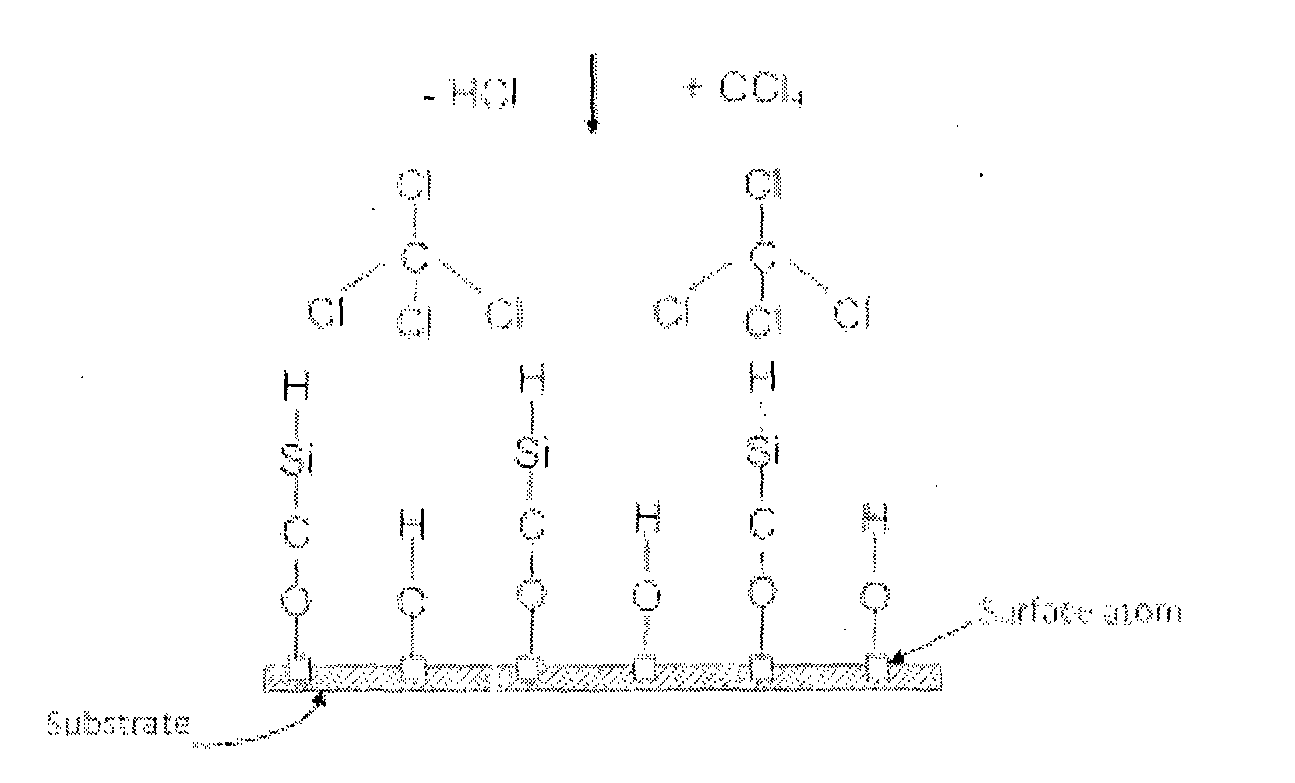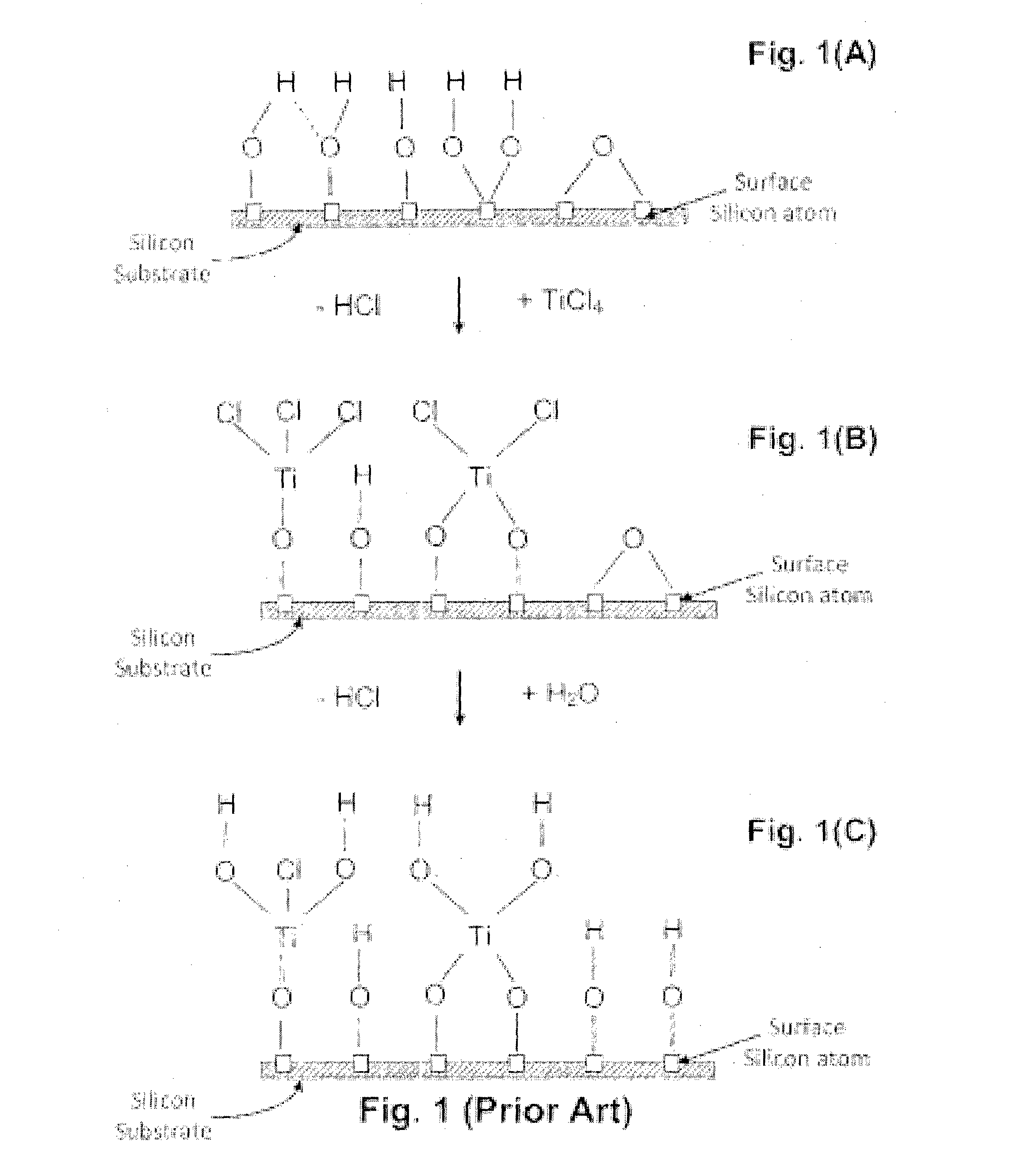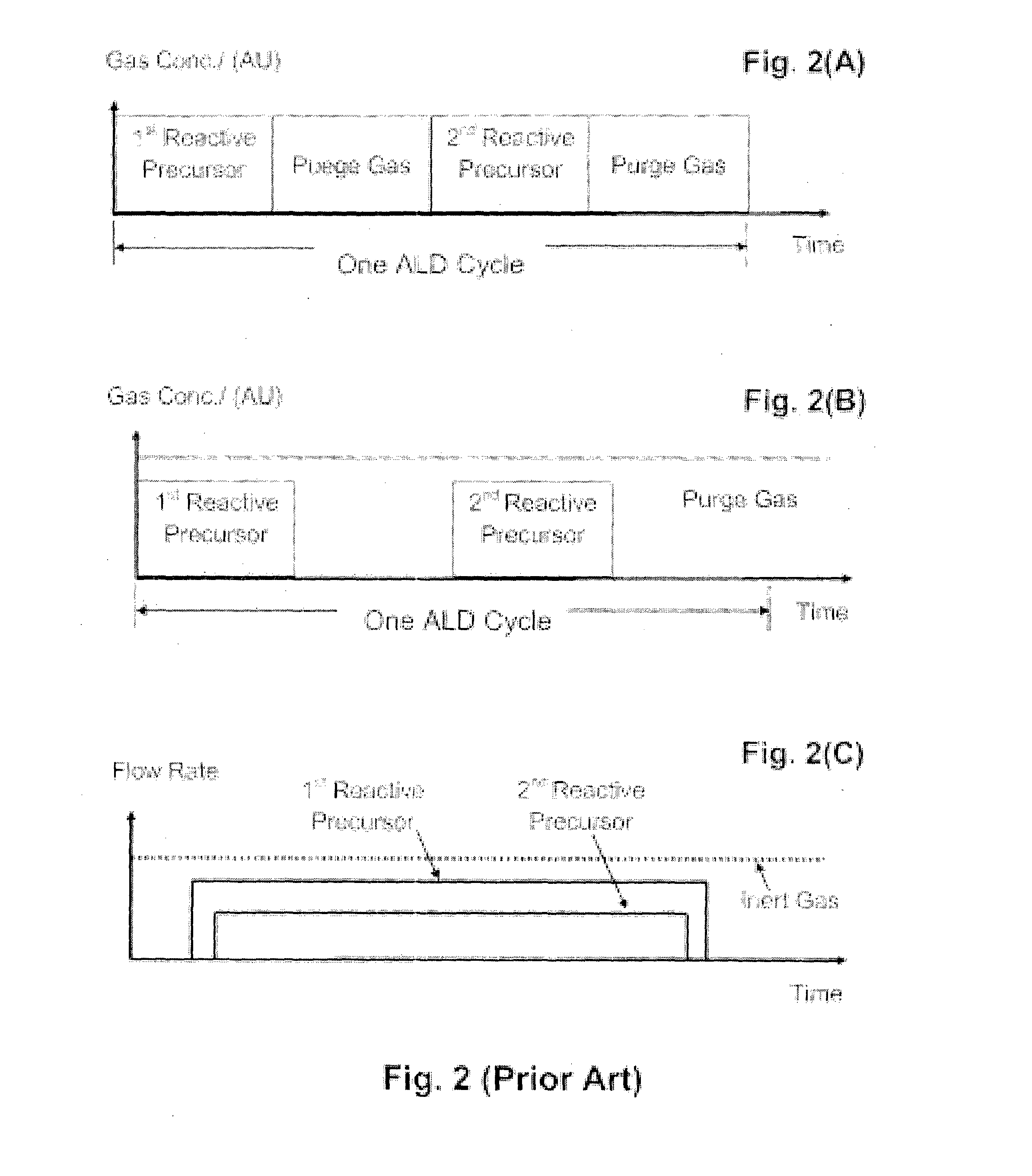Methods of low temperature deposition of ceramic thin films
a thin film, low temperature technology, applied in the direction of vacuum evaporation coating, boron compound, silicon compound, etc., can solve the problems of high defect density, design and operation of dual injector cvd reactor, and poor performance of the cvd reactor. , to achieve the effect of high commercial and technological value, the selection of substrates for the thin film is rather limited
- Summary
- Abstract
- Description
- Claims
- Application Information
AI Technical Summary
Benefits of technology
Problems solved by technology
Method used
Image
Examples
example 1
[0048]Deposition of silicon carbide (SiC) films by ALD, NLD and CVD processes: As described in the background section of the invention, SiC is an important industrial ceramic with numerous applications. However, the prevalent thin film deposition processes for SiC operates at temperatures in excess of 1000° C. Therefore, a low temperature ALD and also CVD SiC thin film process is thus highly desirable. Referring to FIG. 5A, the surface of a substrate is terminated with —OH groups which are highly receptive and reactive towards Cl atoms. Next in FIG. 5B wherein chemisorption of a carbon tetrachloride (CCl4) molecule (similar to a TiCl4 molecule as described in FIG. 1B) on to the —OH terminated substrate surface with the formation of HCl as a product that is released in the gas phase is completed. The substrate, at the end of CCl4 chemisorption step, is terminated with Cl groups with formation of a M-0-CCl3 (M: surface atom of the substrate, denoted by a square in FIGS. 5A, B, C and D...
example 2
[0051]Another thin film material of industrial value is boron nitride (BN). Thin films of BN are currently being deposited employing BCl3 and ammonia (NH3) at high temperature ranging from 700-1000° C. and above. FIG. 6B illustrates variation of Gibb's Free Energy (ΔG) vs. temperature for the following chemical reaction:
B2H6+2NF3→2BN+6HF eq. (2)
[0052]The Very high value of ΔG vs. temperature of the reaction in equation (2) in comparison with the conventional BN process (ALD or CVD) illustrates the high value for developing a low temperature BN thin deposition process. The BN deposition process can be performed at pressures ranging from a few mT to 760 Torr and in the temperature range of 20° C. to 1000° C.
example 3
[0053]Deposition of C3N4 thin films: Processes of deposition and various applications of C3N4 as a thin film material have not yet been fully explored. It is expected to be one of the super-hard materials known. The formation of C3N4 films by ALD, NLD or CVD processes proceeds through carbon halide (e.g. CF4, CF2Cl2, or CCl4) as a carbon source, and NH3 as a nitrogen source in the temperature range of 20° C. to 1000° C., and in a pressure range of a few mT to 760 Torr. The overall chemical reaction of deposition (with CCl4 as a C source) is as follows:
3CF4+4NH3→C3N4+12HF eq. (3)
PUM
| Property | Measurement | Unit |
|---|---|---|
| deposition rates | aaaaa | aaaaa |
| temperatures | aaaaa | aaaaa |
| temperatures | aaaaa | aaaaa |
Abstract
Description
Claims
Application Information
 Login to View More
Login to View More - R&D
- Intellectual Property
- Life Sciences
- Materials
- Tech Scout
- Unparalleled Data Quality
- Higher Quality Content
- 60% Fewer Hallucinations
Browse by: Latest US Patents, China's latest patents, Technical Efficacy Thesaurus, Application Domain, Technology Topic, Popular Technical Reports.
© 2025 PatSnap. All rights reserved.Legal|Privacy policy|Modern Slavery Act Transparency Statement|Sitemap|About US| Contact US: help@patsnap.com



